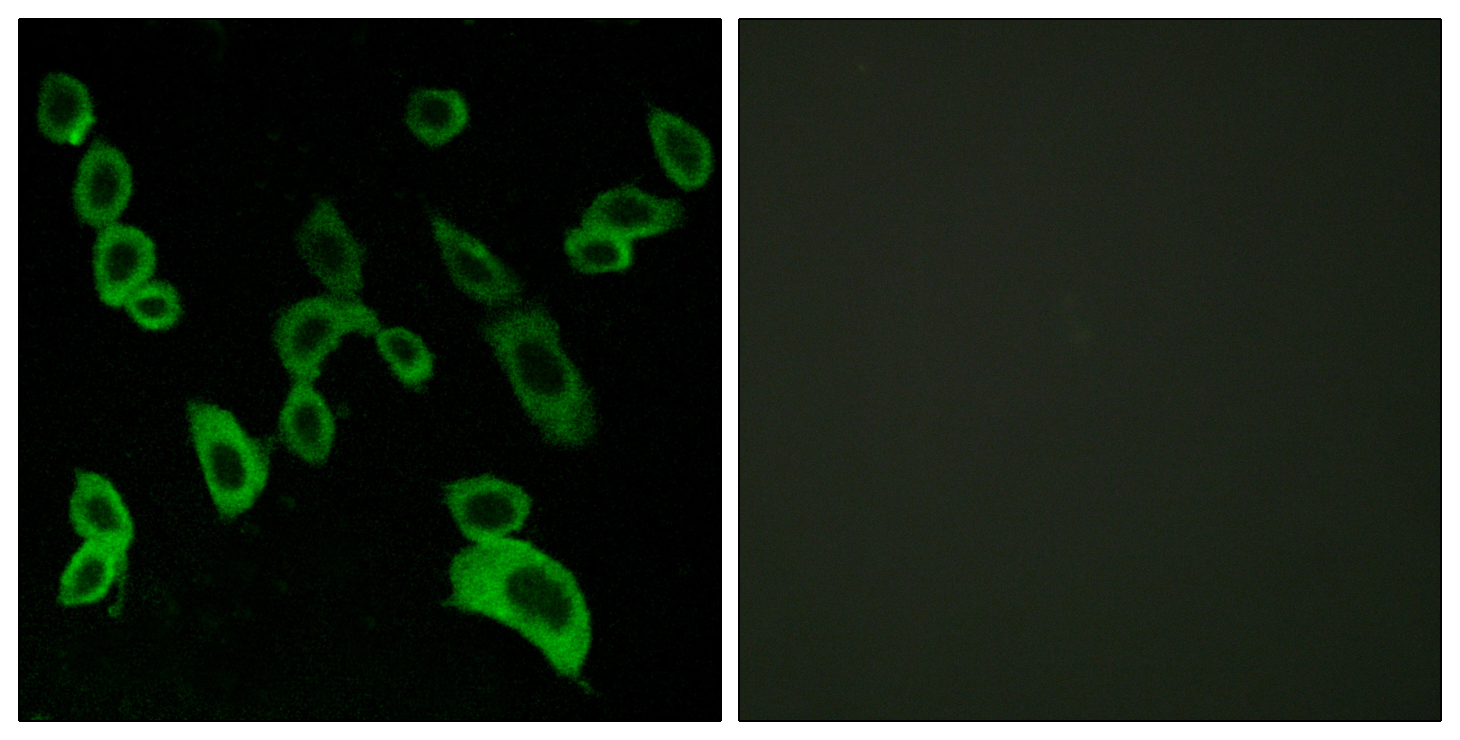GPR139 Polyclonal Antibody
- Catalog No.:YT1972
- Applications:WB;IF;ELISA
- Reactivity:Human;Mouse;Rat
- Target:
- GPR139
- Gene Name:
- GPR139
- Protein Name:
- Probable G-protein coupled receptor 139
- Human Gene Id:
- 124274
- Human Swiss Prot No:
- Q6DWJ6
- Mouse Gene Id:
- 209776
- Mouse Swiss Prot No:
- Q80UC8
- Rat Gene Id:
- 293545
- Rat Swiss Prot No:
- P0C0W8
- Immunogen:
- The antiserum was produced against synthesized peptide derived from human GPR139. AA range:181-230
- Specificity:
- GPR139 Polyclonal Antibody detects endogenous levels of GPR139 protein.
- Formulation:
- Liquid in PBS containing 50% glycerol, 0.5% BSA and 0.02% sodium azide.
- Source:
- Polyclonal, Rabbit,IgG
- Dilution:
- WB 1:500 - 1:2000. IF 1:200 - 1:1000. ELISA: 1:5000. Not yet tested in other applications.
- Purification:
- The antibody was affinity-purified from rabbit antiserum by affinity-chromatography using epitope-specific immunogen.
- Concentration:
- 1 mg/ml
- Storage Stability:
- -15°C to -25°C/1 year(Do not lower than -25°C)
- Other Name:
- GPR139;GPRG1;PGR3;Probable G-protein coupled receptor 139;G(q)-coupled orphan receptor GPRg1;G-protein-coupled receptor PGR3
- Observed Band(KD):
- 40kD
- Background:
- This gene encodes a member of the rhodopsin family of G-protein-coupled receptors. The encoded protein is almost exclusively expressed in the central nervous system. L-tryptophan and L-phenylalanine may act as the physiologic ligands of the encoded protein. Alternative splicing results in multiple transcript variants. [provided by RefSeq, Jan 2016],
- Function:
- function:Orphan receptor. Seems to act through a G(q/11)-mediated pathway.,similarity:Belongs to the G-protein coupled receptor 1 family.,tissue specificity:Expressed almost exclusively in the brain. Detected at very low levels in the peripheral tissues.,
- Subcellular Location:
- Cell membrane; Multi-pass membrane protein.
- Expression:
- Expressed almost exclusively in the brain. Detected at very low levels in the peripheral tissues.
- June 19-2018
- WESTERN IMMUNOBLOTTING PROTOCOL
- June 19-2018
- IMMUNOHISTOCHEMISTRY-PARAFFIN PROTOCOL
- June 19-2018
- IMMUNOFLUORESCENCE PROTOCOL
- September 08-2020
- FLOW-CYTOMEYRT-PROTOCOL
- May 20-2022
- Cell-Based ELISA│解您多样本WB检测之困扰
- July 13-2018
- CELL-BASED-ELISA-PROTOCOL-FOR-ACETYL-PROTEIN
- July 13-2018
- CELL-BASED-ELISA-PROTOCOL-FOR-PHOSPHO-PROTEIN
- July 13-2018
- Antibody-FAQs
- Products Images

- Western Blot analysis of K562 cells using GPR139 Polyclonal Antibody

- Immunofluorescence analysis of LOVO cells, using GPR139 Antibody. The picture on the right is blocked with the synthesized peptide.



